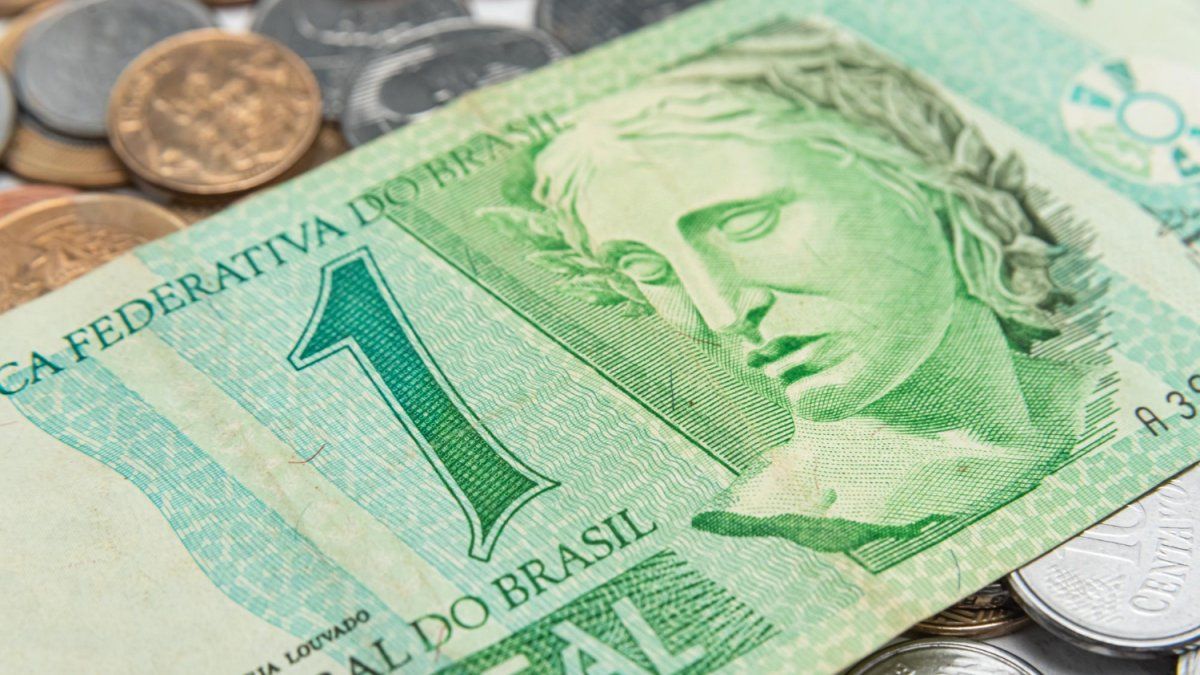At this stage, the Government prioritizes lowering inflation and stopping the decline in activity over fiscal balance and exchange rate unification. That is why it lowers interest rates and intervenes to suspend increases in prepaid payments, fuel and rates.
So although the agenda is neoliberal, As demonstrated by the structure of the basic law, a pragmatic turn is deepening where interventionist measures coexist at various levels with fiscal orthodoxy.
The Government is betting on a partial recovery of activity via credit to alleviate the drop in income. At some point, lower rates will increase credit to alleviate the population’s lower income. The year-on-year data is negative by 35%, with month-on-month growth in April of 13% and 10.6% in personal loans and credit cards, after 5 months of decline, but it is clear that consumption will not drive activity this year. Neither does investment outside of some energy and mining projects or privileged concessions.
The eventual approval of the Bases law demonstrates the pragmatic political turn as we saw in the economy, beyond the aggressive speeches and overacting in networks, a negotiating profile is consolidated not only with the PRO but with the UCR, We Make Federal, Federal Innovation and some Peronist governors. The Bases law would be approved in general, but it will return to Deputies with changes in the RIGI and the tax regime, and perhaps also in delegation of powers and privatizations. Thus there will be no law or May Pact on the 25th.
The RIGI is a scandalous stimulus to transnational companies to the detriment of national industry and the very regressive tax reform that reduces taxes on large taxpayers to the detriment of middle sectors who are again taxed with the income tax.
One source of uncertainty is future exchange rate policy. The exchange rate is falling behind with inflation that ate 80% of the December devaluation. Although the reserves are recomposed, the Government must appeal to BOPREAL to pay profits and dividends at a dollar higher than $1,300 and the commercial debt grows.
The vital exchange rate anchor to maintain inflation in one digit is the main difference with the IMF, which after the Convertibility and the exchange rate crisis of 2018-2019, despite the disbursement of US$ 48 billion with the Agency and which failed for the terrible exchange rate policy of the agreement, will insist on a competitive exchange rate higher than the current one to rebuild reserves.
The second quarter of the year corresponds to the heavy harvest period for Argentina’s main primary exports. At the end of April, the marketing levels of the soybean complex are at minimum values.
Exporters also prefer to wait for a better exchange rate and a recovery of soybeans recovered from the floods in Brazil, since they have credit at negative rates to hold out.
The Rosario Stock Exchange, taking information from the Bioeconomy Secretariat, warns that the percentage of progress in the soybean harvest is only 34%. In percentage terms, the harvest shows the second greatest delay of the century, and more than 20 points below the average harvest of the last 5 campaigns.
According to the latest reports provided by the Chamber of the Oil Industry (CIARA) and the Cereal Exporters Center (CEC), companies in the Argentine oil and cereal sector settled a figure of US$ 1,909 million during April. This represents an increase of 27.2% compared to the previous month but is still a low value for the seasonality presented by the second quarter due to the thick harvest. More precisely, the settlement is 33.7% below the average for the month of April in the last 3 years.
Although there are climatic and cyclical factors that can explain the delay (heavy rains in April and strike of oil producers), the dynamics of international prices, as well as the monetary and exchange policy strategy could explain a certain reluctance of the sector to part with the harvest. .
During 2024, a significant drop in the international price of soybeans has been observed (-11% since January). If compared to the average FAS price of soybeans from the last 3 campaigns, prices as of April are 25% lower.
In foreign currency terms, the loss in the value of the harvest, according to estimates by the Rosario Stock Exchange, amounts to USD 2,850 million.
In relation to the sector’s need for liquidity to face the purchase of inputs for the 2024/2025 campaign, a broad interest in access to credit in dollars is observed in the agricultural sector.
Although after the floods in Brazil and Russia, in the first days of May a change in trend was observed in international prices in the sector. Even in historical terms they are still low, so the liquidation of the sector could be below the government’s expectations.
As we saw, the exchange rate policy, with a 2% monthly devaluation, even in the face of the slowdown in inflation, implies a dynamic of exchange rate delay that, given the fall in international prices, reduces the profitability of the sector.
While the official devaluation rate remains around 2% per month, inflation still runs at double digits per month, thus deepening the appreciation of the real exchange rate: with the price increase in the first quarter it was 51.6%, the Official depreciation was 6%. Inflation has already eaten up 80% of the December devaluation.
Although the Minister of Economy maintains that the December exchange rate jump still allows him to sustain the “crawling” at 2%, the President affirms that the increase in the price of Argentine dollars (the other side of the exchange rate appreciation) is a product of the rearrangement of prices. relative in an economy with excessive regulation and tax pressure.
According to the BCRA survey, on a basis of 100 long-term theoretical balance, at the end of April, it was placed at 93, which would imply an area of relative theoretical balance, but very fragile if the trend is observed.
If the 2% monthly rate is maintained, towards the end of the first semester, the real exchange rate will be in line with the 2018 minimums, which are the lowest values since the exit of Convertibility.
For the moment, the recession and the administration of import payments guarantee a precarious external balance.
The rise in dollar prices of the Argentine economy (the opposite of the exchange rate delay) could add pressure to the decline in industry and employment in a recessionary context.
This delay can be deepened with the entry of financial disbursements and income in energy and mining. But the financial income is temporary and the positive currency balance will be reversed with greater imports, services, payment of utilities and interest.
The truth is that in a damaged productive system and with an economic opening in a world that closes its economies, Argentina will need an exchange rate higher than the average (like between 2002 and 2010) to guarantee the medium-term balance of the sector. external.
A very high exchange rate implies lower salaries, so it would be smart to regulate this opening and not put the chips only in a high exchange rate to guarantee said balance. With systemic competitiveness obtained in a productive development model that stimulates the external sector as much as the internal market, a sustainable model would be possible with greater quality employment and better salaries with a not so high equilibrium exchange rate.
The big question is how the Government will resolve its policy dilemmas: low inflation versus recomposition of the exchange rate and tariffs, low inflation versus the fiscal result (subsidies) in addition to the fiscal slippage that the political agreements to approve the Bases Law will imply. . Another inconsistency is opening the economy to imports to force down prices, aggravating the situation of activity and employment and eroding the external surplus.
Quick results, including cosmetics, necessary to maintain political capital and avoid a worsening of social unrest, but which conflicts with opening the trap and agreeing with the IMF, receiving the necessary foreign currency. Clearly 2024 will continue with stocks because the Government does not want to adjust the exchange rate parity to the level necessary to lift it, to continue with months of lower inflation.
It is interesting how the conflict of objectives leads to confrontations with business sectors both due to the neoliberal matrix and due to the dose of desperate heterodoxy (RIGI with national industry, prepaid for maximum prices after repealing regulatory instruments, energy generators for payment in bonds , the correct taxation of the PAIS tax on the distribution of dividends). What’s more, the energy companies threatened with lawsuits for “violation of private property,” which Milei put as the “first commandment” in the May Pact.
The bet on money laundering and RIGI in mining and energy seems like the Government’s silver bullet, but the magnitude of both, especially money laundering, is uncertain.
We are talking about a film where we know that the Government can temporarily stabilize due to recession and entry of financial resources and via RIGI temporarily, but that in the medium term the model itself becomes a structural outflow of currency that entails a crisis in the external sector such as happened with Martínez de Hoz in 1980-1981, convertibility in 1998-2001 and Macri in 2018 and 2019. The time of the end of the extractivist and debt model is uncertain and will depend on global circumstances that periodically trigger capital flights from the countries that They do not generate development models that make the external sector sustainable.
Source: Ambito
David William is a talented author who has made a name for himself in the world of writing. He is a professional author who writes on a wide range of topics, from general interest to opinion news. David is currently working as a writer at 24 hours worlds where he brings his unique perspective and in-depth research to his articles, making them both informative and engaging.




